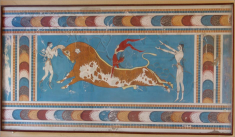Speaker
Description
Equivalent photons from the intense electromagnetic fields produced by ultra-relativistic heavy nuclei can fluctuate into quark-antiquark pairs, interact coherently with a target nucleus and emerge as real vector mesons ($\phi$, $\rho^0$, $J/\psi$, etc.). It was recently discovered that the quasi-real photons manifest by such Lorentz-boosted electromagnetic fields are linearly polarized. While only one real vector meson is produced in one such interaction, the photon polarization and the indistinguishability of the target and source nuclei lead to quantum interference between two contributing amplitudes.
We present STAR measurements of the observation of a novel form of quantum interference due to the entanglement of the vector meson decayed daughters, which results in an interference pattern between distinguishable particles. Furthermore, we study this process in ultra-relativistic collisions with and without hadronic overlap to test for the potential decoherence caused by a femto-scale environment of strongly-interacting matter. To this end, we present measurements of the interference pattern in the momentum of the vector meson decayed daughters and compare the strength of the interference to theoretical models.
Details
Isaac Upsal, Rice University and University of Science and Technology of China, US
| Is this abstract from experiment? | Yes |
|---|---|
| Name of experiment and experimental site | STAR |
| Is the speaker for that presentation defined? | Yes |
| Internet talk | Maybe |
